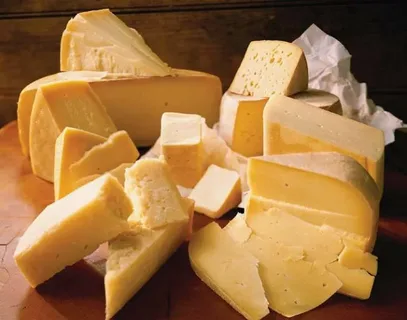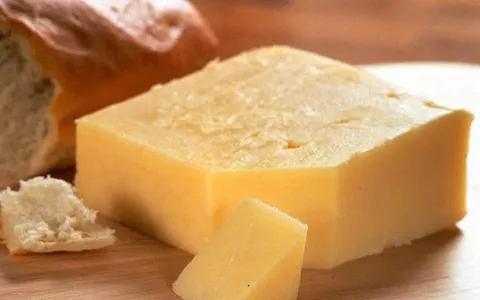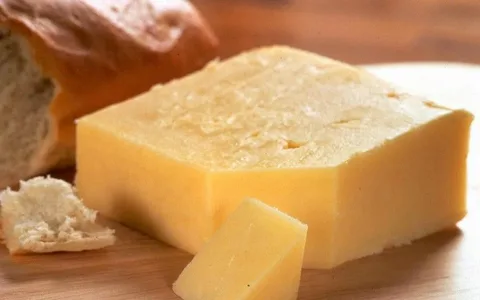Cheese Name for an English Village: Exploring Quirky Traditions and Fun Facts
Table of Contents
Introduction:
Did you know that some English villages have names that sound like cheese? The phrase “cheese name for an English village” can make you think of the rich history and fun traditions behind these names. This is not just about food but also about how people named places a long time ago.
In England, there are many villages with unusual names, some even inspired by food like cheese. Exploring a cheese name for an English village is a fun way to learn about the culture and stories of the past. Each name has a unique history that can teach us something about the village.

What is a Cheese Name for an English Village?
A cheese name for an English village is a village name that sounds like it could be related to cheese or has a connection to cheese in some way. This might be because the village was once known for making a special type of cheese, or simply because its name reminds people of cheese. England has many villages with unique names, and some of them happen to sound like famous cheeses, making them both charming and fun to explore.
One of the best examples of a cheese name for an English village is the village of Cheddar. Cheddar is not just a type of cheese but also a real place in England. The village of Cheddar gave its name to the famous cheese that people all around the world enjoy today. This shows how a village’s name can become linked to a product that people love, making both the place and the cheese well-known.
Another village with a similar story is Stilton. Stilton is known for its rich, blue cheese, which many people enjoy. Even though the cheese itself wasn’t made in the village, the name has become famous because of it. This connection between the village and the cheese shows how a cheese name for an English village can spread beyond the local area and become recognized worldwide.
These cheese-related village names often reflect the local history and culture. In the past, many small villages were known for what they produced, and cheese was a common and important food in England. By naming a village after a local product like cheese, the village became known for something unique and valuable, bringing pride to the people who lived there.
A cheese name for an English village is more than just a fun or unusual name. It’s a symbol of the village’s history, the importance of cheese-making, and the deep connection between the place and the food that was made there. For those who enjoy both history and food, exploring these villages is a fascinating way to discover more about England’s past.
Famous Villages with Cheese Names
Some villages in England are famous because their names are linked to cheese. These places may have produced cheese in the past, or their names just remind people of a type of cheese. A cheese name for an English village can bring fame to a small place, as both the name of the cheese and the village become well-known.
One of the most famous villages with a cheese name is Cheddar. Cheddar is not only a village in Somerset, England, but also the birthplace of one of the world’s most popular cheeses: Cheddar cheese. The caves around the village of Cheddar were used to store and mature cheese, making it the perfect place for cheese-making. Today, Cheddar is famous worldwide, and the village still celebrates its connection to this delicious cheese.
Another well-known village with a cheese name is Stilton. Stilton is a small village in Cambridgeshire, and it gave its name to the famous blue cheese known as Stilton cheese. What’s interesting is that the cheese wasn’t originally made in the village of Stilton, but it was sold there, and the name stuck. Now, Stilton cheese is enjoyed by people all over the world, and the village is proud of its link to this strong-flavored cheese.
Wensleydale is another village known for its cheese. Located in the beautiful Yorkshire Dales, the village of Wensleydale is famous for making Wensleydale cheese, a crumbly and mild-flavored cheese. The cheese is made using traditional methods and is often associated with English traditions and even mentioned in popular TV shows like “Wallace and Gromit.” The village and the cheese are now closely connected in people’s minds.
These villages show how a cheese name for an English village can bring recognition and even fame. The villages become known not only for their beautiful locations but also for the delicious cheeses that share their names. Visitors often travel to these places to taste the cheeses and learn more about their history, keeping the connection between the village and its cheese alive for future generations.

The History Behind a Cheese Name for an English Village
The history behind a cheese name for an English village often goes back many centuries. Many English villages became famous for their local products, and in some places, cheese was one of the most important things they produced. Villages like Cheddar and Stilton, for example, became well-known because of the cheeses that either originated there or were sold there. These villages may have started as simple farming communities, but their connection to cheese helped them stand out.
In the case of Cheddar, the village’s location played a big role in its cheese-making history. Cheddar is located near deep caves, which were perfect for storing and aging cheese. The cool, damp conditions of the caves helped create the unique texture and taste of Cheddar cheese. As the cheese became popular, people all over England began to associate the name of the village with the cheese. Over time, the cheese became known simply as “Cheddar,” but its roots remain tied to the village.
For Stilton, the story is a little different. While Stilton cheese became famous because of the village, the cheese was actually made elsewhere, mostly in nearby areas like Leicestershire and Nottinghamshire. However, the village of Stilton became famous because it was a key stop on a busy coaching route where the cheese was sold to travelers. The name “Stilton cheese” stuck, and the village became known for something it didn’t even produce, showing how important trade routes and markets were in shaping village identities.
In places like Wensleydale, the local cheese-making traditions were passed down from generation to generation. Monks originally brought the cheese-making techniques to the village in the 12th century, and the methods have been preserved over time. The village and the cheese are now closely linked, and Wensleydale cheese is known for its rich heritage and traditional production methods, making it a symbol of both the village and English cheese-making history.
These examples show that the history behind a cheese name for an English village is not just about food—it’s about how people lived, worked, and traded. Cheese was a valuable product that connected villages to larger markets, and the names of these villages have lived on through the cheeses they are known for. The history of these villages reminds us of the important role food played in shaping the identity of places all over England.
How Villages Get Their Names
Villages often get their names from the land, people, or important activities that took place there long ago. In England, many village names come from the natural surroundings, like rivers, hills, or forests, or from what people did for a living. Some names are based on old words from languages like Anglo-Saxon or Norse, which makes them sound quite unique today.
For example, a village might be named after a nearby river or a type of tree that was common in the area. In the past, many people could not read or write, so naming a village after something easy to recognize helped travelers and locals know where they were. This is why a cheese name for an English village makes sense in places where cheese was important—people would know right away what the village was known for.
Another common way that villages get their names is through important people who lived there. In some cases, the name of a village would include the name of a landowner or a leader from long ago. Over time, these names stuck, and now we see many villages with names that sound like people’s names. Sometimes, these people may have been the ones who owned the land or built homes in the area.
Some villages are also named after the products or activities they were famous for. For instance, if a village made a lot of cheese, wool, or other products, its name might reflect that. A cheese name for an English village could come from the fact that cheese-making was a big part of life there, like in Cheddar or Stilton. These names tell a story about what made the village special in the past.
Overall, the names of villages help us understand their history. Whether the name comes from the land, the people, or the local products, it gives us a glimpse into the village’s past and what made it an important place to the people who lived there.

Cheese in English Culture and Traditions
Cheese has been an important part of English culture and traditions for many centuries. In England, cheese is not just a food; it holds a special place in history, celebrations, and everyday life. From traditional cheese-making methods to famous cheese-related festivals, cheese plays a big role in shaping English identity.
One well-known tradition is cheese rolling, which takes place every year in Gloucestershire. In this event, a large wheel of cheese is rolled down a steep hill, and people race after it. The person who reaches the bottom first wins the cheese. This event may sound unusual, but it is a beloved part of local tradition and attracts visitors from all over the world. This shows how a simple food like cheese can become a symbol of fun and community.
In many English villages, cheese-making was a major activity that supported local economies. Villages like Cheddar and Stilton are famous because of their cheese-making history. The cheese produced in these villages became popular not only across England but also internationally. This connection between cheese and villages has become a lasting part of England’s food culture.
Cheese also plays a role in traditional English meals. From Ploughman’s Lunch—a simple meal of bread, cheese, and pickles—to cheese-filled pies and sandwiches, cheese is a staple in English cuisine. Many families still enjoy these simple meals, keeping the tradition alive through the generations. A cheese name for an English village can remind people of these traditions and how much cheese is loved in English culture.
Overall, cheese is more than just a food in England. It is a symbol of heritage, community, and tradition. Whether it’s through local festivals, village names, or everyday meals, cheese remains an important part of English life, connecting people to their history and to each other.
Is There Really a Cheese Named After a Village?
Yes, there are several cheeses named after villages in England. One of the most famous examples is Cheddar cheese, which is named after the village of Cheddar in Somerset. Cheddar cheese is one of the most popular cheeses in the world today, and it all began in this small English village. The cheese was originally made in the Cheddar Gorge caves, where the cool temperatures helped the cheese to age perfectly. Over time, the cheese became so famous that the village name and the cheese became forever linked.
Another well-known cheese named after a village is Stilton. Stilton cheese is a blue cheese with a strong flavor, and it is named after the village of Stilton in Cambridgeshire. Interestingly, Stilton cheese was not actually made in the village itself, but it was sold there. The village became a popular stop for travelers, and the cheese sold there became so popular that it was named after the village. Today, both the village of Stilton and the cheese are famous, and people all over the world recognize the name.
Wensleydale is another example of a cheese named after a village. Wensleydale cheese comes from the Wensleydale region in Yorkshire, where it has been made for centuries. The cheese is known for its crumbly texture and mild flavor. The village and its cheese are closely connected, and the traditional methods used to make Wensleydale cheese have been passed down through generations. This strong link between the village and its cheese is part of what makes the name so special.
These examples show that there really are cheeses named after villages, and these names have become famous far beyond their local origins. A cheese name for an English village is not just a fun coincidence—it reflects the deep connection between the village and its local product. These village names remind us of the importance of traditional food-making and how a small place can become well-known because of the cheese it produces.
Cheeses like Cheddar, Stilton, and Wensleydale highlight how village names can become globally recognized through their association with cheese. For many people, the name of the village and the cheese are one and the same, representing both local pride and a long history of cheese-making excellence.

The Fun Side of a Cheese Name for an English Village
There is a lot of fun and charm when it comes to a cheese name for an English village. These village names can bring a smile to people’s faces because they sound both quirky and delicious. For example, when someone hears the name Cheddar or Stilton, they might first think of the cheese before realizing that these are also the names of real places. This playful connection between food and place makes the villages feel more special and memorable.
One of the most entertaining aspects of a cheese name for an English village is how it brings tourists and cheese lovers together. People who enjoy cheese are often curious to visit the villages where the names come from. Whether it’s the caves in Cheddar where the famous cheese was once aged, or the village of Stilton where travelers would stop to buy cheese, these places become attractions simply because of their tasty names. This adds a sense of adventure and fun for visitors exploring England’s cheese-related history.
The connection between cheese and village names also sparks creativity in events and festivals. For example, the village of Cheddar is famous not only for its cheese but also for its annual food festivals, where people can taste different varieties of Cheddar cheese. These events celebrate the village’s cheese-making history, while adding a festive and fun atmosphere for locals and tourists alike. The idea that a simple product like cheese can shape a village’s identity in such a joyful way is truly unique.
Additionally, a cheese name for an English village often leads to funny conversations and jokes. The thought of a village being named after a type of cheese, or vice versa, can be amusing to both locals and visitors. People love talking about these village names, which adds to the fun. It’s not every day that a small English village gets attention just because it shares its name with something as common as cheese!
In the end, the fun side of a cheese name for an English village lies in its ability to create a lighthearted connection between food, history, and place. These names bring joy to those who hear them, spark curiosity among travelers, and offer a unique way for villages to celebrate their heritage. Whether you love cheese or just enjoy learning about quirky village names, there’s always something to smile about when it comes to these delightful places.
Exploring the Cheese Name for an English Village Trend
The trend of cheese names for English villages has gained attention in recent years, with more people becoming curious about the connections between famous cheeses and their origins. Many villages that have names linked to cheese have seen an increase in tourism and interest. This trend celebrates both the rich history of cheese-making in these areas and the growing popularity of artisanal cheeses across the world. It’s fascinating how a simple food product like cheese can become so deeply connected to a village’s identity.
The rise of food tourism has played a big part in this trend. More and more people are traveling to places like Cheddar, Stilton, and Wensleydale not only to taste the local cheese but also to experience the charm of the villages. These places have embraced their cheese-related names, and you can find cheese-themed shops, festivals, and even guided tours. The growing interest in local foods and traditions has made these villages popular destinations for food lovers and curious travelers alike.
Another part of this trend is the increased interest in cheese name for an English village as a unique way to market local products. Villages are proudly displaying their cheese-making heritage through souvenirs, local events, and even products that feature the name of the village. For example, a village like Cheddar may not only sell cheese but also feature other local goods, like cheese-themed merchandise, to keep the cheese tradition alive and thriving. The connection between cheese and the village’s name creates a unique branding opportunity that benefits both the local economy and the community’s cultural identity.
In addition, the cheese name for an English village trend has sparked fun and creative events, making cheese even more of a focal point in these areas. Some villages hold special festivals dedicated to cheese, with cheese tastings, cooking classes, and even competitions. These events attract people who want to learn more about the history and tradition behind the cheese, while also enjoying the fun and festive atmosphere. The growth of cheese festivals is a testament to how the village names can help turn an ordinary product into an exciting and memorable experience.
Overall, the trend of cheese names for English villages highlights how food and place are connected in ways that go beyond just eating. These villages have turned their cheese-making history into a way to attract visitors, celebrate local traditions, and create a sense of pride in their community. As cheese continues to play a key role in English culture, this trend is likely to grow, making these village names even more famous around the world.

Why Some Villages Sound Like Cheese
Some villages in England have names that sound a lot like cheese, and this connection can be both fun and interesting. The reason for this is often linked to the history and traditions of the villages themselves. In many cases, these villages were known for producing cheese, which is why their names became associated with the food. The sound of the names often reflects the importance of cheese to the local community, as cheese-making was an essential part of village life for centuries.
For example, the name “Cheddar” is not just a popular type of cheese but also the name of a village in Somerset. The village of Cheddar became famous for its cheese-making, and over time, the name of the cheese and the village became inseparable. When people hear the name “Cheddar,” they automatically think of the famous cheese, which was traditionally made in the caves of the village. This link between cheese and village names is not unique to Cheddar—there are other villages with similar names, like Stilton, Wensleydale, and Red Leicester, that have a strong association with the cheese of the same name.
Another reason why some villages sound like cheese is because of the way the names were created. Many village names in England have roots in old English or Old Norse, where the sound of the name was based on the activities or resources of the area. In some cases, cheese-making was such an important part of life in the village that it influenced the name. For example, Stilton cheese, although not originally made in the village, became closely linked to it because the cheese was sold there, and the village’s name became associated with the cheese itself.
The connection between village names and cheese also tells a story about the role of cheese in everyday life. In ancient times, cheese was a way to preserve milk, and many villages were known for making and selling cheese. Over time, as cheese-making became a part of the village’s economy, the village name became synonymous with the product. People in other regions began to recognize these villages by the cheese they produced, which made it natural for the village name to sound like cheese.
In the end, the reason why some villages sound like cheese is a combination of history, tradition, and the important role that cheese played in these communities. Whether it’s through local production or simply being known for a particular type of cheese, these villages have created lasting connections with cheese that continue to be celebrated today. The playful connection between village names and cheese remains a fun and charming aspect of English culture.
Cheese and Place Names: A Unique Connection
The connection between cheese and place names is a unique and fascinating part of English culture. Many villages in England are known for their cheese, and some even have cheese names that are so closely tied to the area’s identity. This connection goes beyond just the food itself; it’s about the history, traditions, and local pride that cheese has brought to these places. The villages of Cheddar, Stilton, and Wensleydale are great examples of how a simple food can become a symbol of a place and its people.
The tradition of naming cheese after places is deeply rooted in history. For centuries, villages in England have been known for their local cheese-making, with each region developing its own distinctive style. For example, Cheddar cheese originated in the village of Cheddar in Somerset, and over time, it became a popular cheese both in the UK and around the world. The village became famous because of the cheese, and today, the name Cheddar is synonymous with the rich, tangy cheese that bears its name. This is just one example of how a place name can become linked to cheese.
The unique connection between cheese and place names is also about geography and local production. Many of these cheeses were made using traditional methods that were passed down through generations. These cheeses are often made with local ingredients, such as milk from nearby farms, which makes them taste unique to the area. The Wensleydale cheese from Yorkshire is another example of how a place and its cheese are forever linked. The cheese has been made in the region for over 1,000 years, and the name of the cheese and the village are inseparable in the minds of many cheese lovers.
This connection also helps preserve local traditions and boost local economies. As the popularity of these cheeses grew, so did the fame of the villages that produced them. Many visitors travel to these villages not only to enjoy the cheese but also to learn about the traditional methods used to make it. Some villages have cheese-making museums, cheese festivals, and tasting tours, all of which help keep the history of cheese-making alive. The combination of local pride, rich history, and great-tasting cheese makes these villages a unique part of England’s cultural heritage.
In conclusion, the connection between cheese and place names is a special part of English culture that continues to thrive today. The villages that are famous for their cheese have built strong identities around the food they produce, and this bond between cheese and place names continues to attract visitors from around the world. Whether it’s Cheddar, Stilton, or Wensleydale, the unique connection between cheese and place names tells a story of tradition, community, and local pride.
The Meaning Behind a Cheese Name for an English Village
The meaning behind a cheese name for an English village often goes deeper than just the food itself. These names are not simply about the cheese; they reflect the long-standing relationship between the village and its traditions. Many villages became known for their unique style of cheese-making, and over time, the village and the cheese became inseparable. The name of the village itself came to symbolize the history, culture, and expertise of the people who lived there and made the cheese.
Take Cheddar, for example. The village of Cheddar, located in Somerset, is the birthplace of one of the world’s most famous cheeses. The name Cheddar has a deep connection to the village’s history, as it was here that cheese-making traditions were first developed. The cool caves in Cheddar Gorge provided the perfect environment for aging cheese, and the name of the village became associated with the distinctive, sharp flavor of the cheese. In this case, the name Cheddar reflects both the place and the product, symbolizing the area’s role in shaping the history of cheese-making.
Similarly, Stilton, another well-known cheese, is named after the village of Stilton in Cambridgeshire. While the cheese was not originally made in the village, it became famous because it was sold there, and over time, the name of the village became synonymous with the cheese. The name Stilton carries the legacy of a place where travelers would stop to enjoy this flavorful blue cheese, and it has since become a symbol of British cheese-making. The meaning behind this name reflects the village’s role as a key point in the cheese’s distribution, even though it was made elsewhere.
The meaning behind a cheese name for an English village is also tied to the pride the villagers feel for their local product. For many centuries, cheese was a vital part of village life in England. Villages were often known for making their own distinct cheeses, using local milk and traditional methods that had been passed down through generations. The name of the cheese became an expression of local identity and pride. Today, these villages continue to celebrate their cheese-making heritage through festivals, tours, and cheese markets, keeping the history alive.
In conclusion, the meaning behind a cheese name for an English village is a reflection of the close connection between a place, its people, and the food they produce. These names carry the stories of generations of cheese-makers who perfected their craft, and they represent the cultural importance of cheese in English village life. Whether it’s Cheddar, Stilton, or Wensleydale, these names remind us of the rich history and traditions that have shaped the villages and their famous cheeses.

How to Visit a Village with a Cheese Name
Visiting a village with a cheese name for an English village is a delightful experience for food lovers and history enthusiasts alike. Whether you are interested in tasting the local cheese, learning about its production, or simply enjoying the charm of these unique villages, there are plenty of ways to make the most of your visit. To start, it’s important to do a bit of research on the village’s cheese-making history and the local attractions that are tied to the cheese. Many of these villages offer tours, festivals, and tastings that will help you immerse yourself in the local culture.
One of the best ways to visit a cheese-named village is to plan your trip around a cheese festival or market. Many villages that are famous for their cheese, like Cheddar or Wensleydale, host annual events where visitors can sample different types of cheese, watch demonstrations, and learn from expert cheese-makers. For example, the Cheddar Cheese Festival in Somerset is a popular event where people can explore the history of Cheddar cheese and try fresh samples. Participating in these events will give you a deeper understanding of the village’s cheese-making traditions and allow you to interact with locals who take great pride in their cheese heritage.
While in the village, don’t forget to visit the local cheese shops and markets. Many villages have small, family-run stores where you can buy the best local cheese and other regional products. These shops often carry a variety of cheeses, including ones that are not available in supermarkets. If you visit Wensleydale, for example, you can buy a range of local cheeses, including the famous Wensleydale cheese, and enjoy it alongside other regional specialties. These shops offer a great opportunity to take a piece of the village home with you.
Additionally, exploring the village itself is a wonderful part of the experience. The streets of villages like Stilton or Cheddar are often filled with historic buildings, charming cafes, and picturesque views. Take a walk around the village and visit landmarks related to the cheese-making process. Some villages have old cheese-making dairies that you can tour to see how the cheese was traditionally made. Many villages also have small museums dedicated to the history of cheese-making, which can offer fascinating insights into how these cheeses became so famous.
In conclusion, visiting a village with a cheese name for an English village is a fun and educational adventure. From attending cheese festivals and tasting local cheeses to exploring the village’s historic sites and cheese-making traditions, there is plenty to enjoy. Whether you are a cheese connoisseur or simply a curious traveler, these villages provide a unique opportunity to learn more about the culture and history of English cheese. So pack your bags, bring your appetite, and get ready to experience the delicious world of cheese in some of England’s most famous villages
Conclusion
In conclusion, visiting a village with a cheese name for an English village is a fun and exciting way to learn about local history and enjoy some delicious food. These villages are not just famous for their cheese, but they also offer a chance to experience the culture and traditions that have been passed down for generations. Whether you’re attending a cheese festival, exploring charming streets, or tasting local cheeses, you’ll discover something special in each village.
So, next time you plan a trip, consider visiting one of these villages with a cheese name. It’s a great way to taste the best cheeses, learn new things, and enjoy a fun day out. From Cheddar to Wensleydale, there’s a village waiting for you to explore. Don’t forget to bring your taste buds and curiosity along!














Post Comment